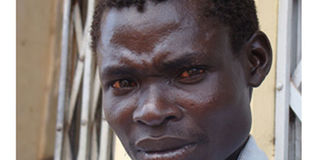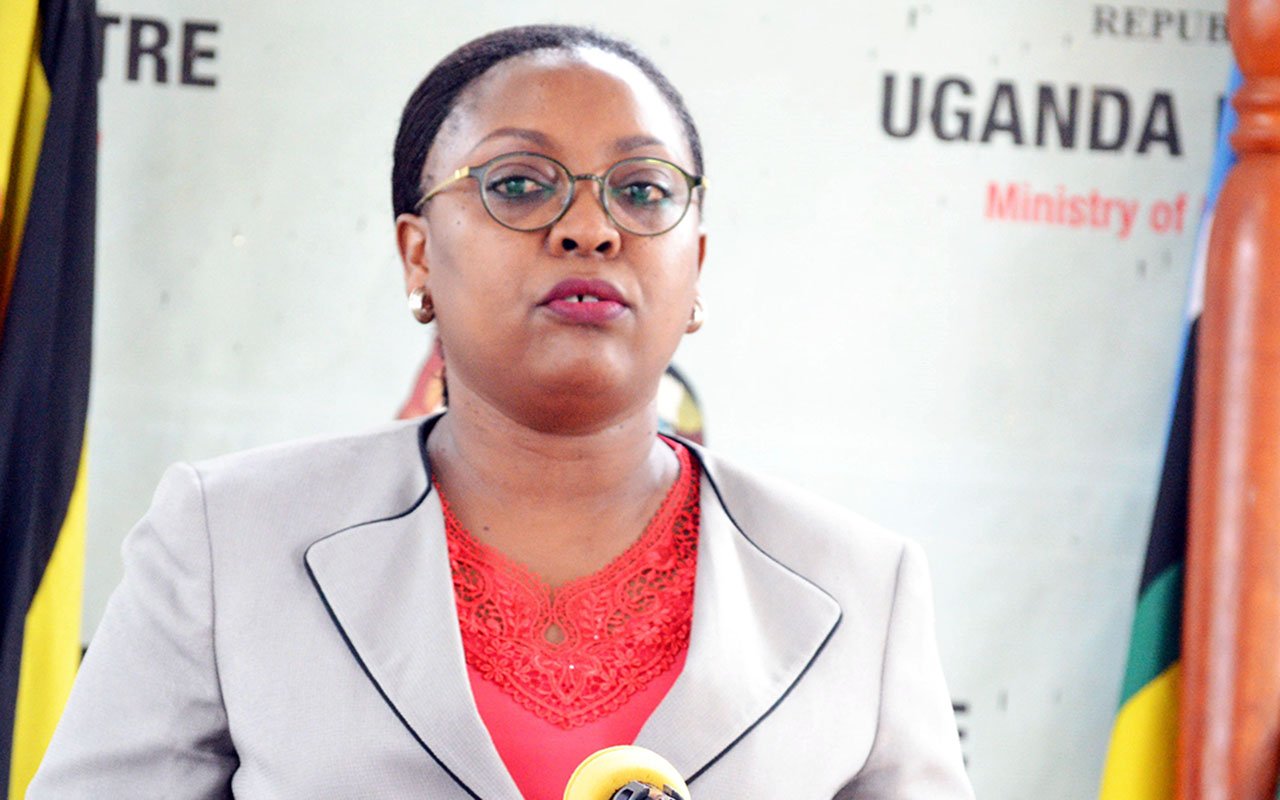Laments of ex-LRA abductees

Kilama Otto is a former LRA abductee.
What you need to know:
“Look, I live my life through brewing and selling alcohol. My children have dropped out of school because I can’t afford to pay their fees. Let them arrest Kony and take him wherever they want but what matters for us is meaningful support to enable us regain our dignity,” Mary Auma ex-abductee.
At 26, Kilama Otto was abducted by the Lord’s Resistance Army (LRA) from his home in northern Uganda’s Nwoya District. After fighting for the rebels for nine years, he escaped in 2001 and surrendered to the Ugandan army.
He now lives with his wife and four children in a simple hut in Kanyagoga, a suburb of the northern town of Gulu, scraping together a living as a boda boda cyclist.
“I don’t see any change in me. It’s a life of misery with nothing to do,” he told IRIN.
“I used to live in my village, Alero, but I had to come back [to Gulu] to find work because of the land conflict and stigma at home, he said. “My uncle said he couldn’t stay with me in the same home because I am full of blood, that I killed people when I was in the bush,” he added.
Otto said his wife had been taunted by other women in the village and feared for her life.
“It is so painful to hear this from my own people, yet I did not want to be in the LRA,” he said.
“If they capture Kony that will be good but it will not mean the end of the LRA conflict because what about other commanders and fighters?” he wondered, going on to name “very dangerous” LRA leaders he thought might replace Kony: Odhiambo, Ocan Bunia, Dominic Ongwen, Okot, and Ceaser.
“These are people who should be courted patiently and assured that they will be safe once they return home because you can’t just take them lightly like other low-ranking LRA fighters,” he warned.
Nothing for free anymore
Aside from any military offensive against the rebels, “there is a need for the government to ensure that the causes and effects of the conflict are addressed so that people can forget the past,” he said.
Only a small proportion of some 13,000 former LRA abductees granted amnesty are being assisted by community-based organisations, who train them in income -generating activities such as bead-making, knitting, tailoring and construction.
Most men make do as boda boda drivers, subsistence farmers or casual labourers, while many of the women brew alcohol or work as barmaids, domestic servants, water carriers or market traders in the streets of Gulu - a situation most of the returnees described as deplorable.
“When I was with the LRA, it was a matter of going for raids and getting what you needed, but here at home there is nothing for free,” said Otto.
Isaak Kilama was abducted from his village in Amilobo in Awer, Amuru district, in 1998 and escaped from the LRA in 2004 after spending six years in captivity. He now makes a living growing and selling tomatoes.
He told IRIN that killing or capturing Kony would not end the problems in northern Uganda or ensure lasting security there.
“The only way out is to allow these people, Kony and his fighters, to return home, provided they are ready to take amnesty,” Kilama said.
Under the terms of Uganda’s Amnesty Act, all members of the LRA are entitled to amnesty if they surrender, but only once. Those who receive amnesty and return to the bush are not eligible for it again and are liable to be tried in the International Crimes Division of the Ugandan High Court. There is a provision for amnesty to be denied individuals, but this can only be invoked by the minister of internal affairs acting with parliament.
What legal fate awaits Kony should he surrender or be captured alive, remains uncertain.
Mary Auma, 36, a mother of four, was first abducted in 1993. Over the next decade, she escaped and was recaptured by the LRA four times.
“I survived all these abductions because I was a wife of one of the senior LRA commanders, Raska Lukwiya. He was killed in 2006,” Auma said.
Indelible mark
Auma and others being helped by the Gulu Women’s Economic Development and Globalisation, a community-based group supported by the ICC’s Trust Fund for Victims, said the capture or death of top LRA leaders could not undo the suffering they have endured nor their current hardships.
“Look, I live my life through brewing and selling alcohol. My children have dropped out of school because I can’t afford to pay for their secondary education,” Auma said. “Let them arrest Kony and take him wherever they want but what matters for us most is we want meaningful support that can help us regain our dignity,” she said.
“The only hope we had in life was having our children educated but this is fading away,” said Auma, who then became too upset to continue the interview.
“You have to do what you can for yourself. Nobody else cares,” said another former abductee, Michael Dickting, who now repairs bicycles to pay his siblings’ school fees.
the lra aftermath
The Lord’s Resistance Army. Is a militant group with a syncretic Christian extreme religious ideology, known for the extreme atrocities they commit against civilians, including killings, mutilations, and in some accounts even cannibalism. The LRA was formed in 1987 in the Acholi region of Northern Uganda. It is led by Joseph Kony, who proclaims himself the “spokesperson” of God and a spirit medium, primarily of the Holy Spirit, which the group believes can represent itself in many manifestations.
In 2005, the international criminal court issued arrest warrants for Kony, his deputy Vincent Otti, and three other rebel commanders. Within months the LRA leadership had expressed a desire for peace talks. Negotiations began in Juba, in southern Sudan, last year, and are continuing. Rebel forces, thought to number several thousand, are holed up in southern Sudan and the north-east of the Democratic Republic of Congo.
Kilama Otto, former abductee [pictured]. “When I was with the LRA, it was a matter of going for raids and getting what you needed, but here at home there is nothing for free.”
Mary Auma, a former abductee now struggling with children. “The only hope we had in life was having our children educated but this is fading away, You have to do what you can for yourself. Nobody else cares,” said another former abductee, Michael Dickting, who now repairs bicycles to pay his siblings’ school fees.”
The LRA nightmares in northern Uganda
Led by the reclusive Joseph Kony, the Lord’s Resistance Army is responsible for Africa’s longest running conflict. At its peak, the rebels’ brutal insurgency displaced nearly two million people in northern Uganda. The conflict has seen more than 10,000 people killed in massacres, while twice that number of children have been abducted by the LRA and forced to work as soldiers, porters and sex slaves.
The LRA traces its beginnings to anti-government movements formed in the mid-1980s after Yoweri Museveni overthrew the regime of Tito Okello, an ethnic Acholi from northern Uganda.
Kony, a self-professed spirit medium intent on governing Uganda using biblical commandments and Acholi traditions, launched his insurgency in 1987. Rather than focusing on military targets, the LRA usually targeted the very citizens it claimed to be fighting for, raiding villages for supplies and forcing children to carry the goods into the bush.
In 1991, President Museveni’s government launched a huge military campaign, known as Operation North, to destroy the LRA. The assault failed, and with the support of the Sudanese government, the rebels were able to establish safe bases across the border in southern Sudan.
Venturing with ease into northern Uganda, the LRA became increasingly brutal. Civilians suspected of supporting the government or forming self-defence forces had their ears, lips and noses hacked off. During attacks on villages, rebels carried out mass abductions of children who in turn were forced to carry out future attacks - making them both victims of the conflict and perpetrators. In government attacks abducted children would be killed, angering the local population.
To deny the rebels the chance to loot food and abduct civilians, the army emptied the countryside, herding civilians into vast and squalid “protection” camps. And, in 2002, the army again tried gain to wipe the rebels out, launching so-called Operation Iron Fist.
Again, however, the attempted military solution failed. Within months of the operation, the LRA was carrying out attacks with a brutality unseen since the mid-90s. Bands of rebels began overrunning villages such as Katine, in the Soroti district of north-east Uganda, which had previously been untouched by the conflict.
Around Gulu and Kitgum, two of the bigger towns in northern Uganda, the threat of abduction became so great that tens of thousands of children from nearby villages marched into the town centres each night to sleep in schools, hospitals and on pavements – anywhere they could find safety in numbers. The plight of these so-called “night commuters” helped to focus world attention on the crisis.




